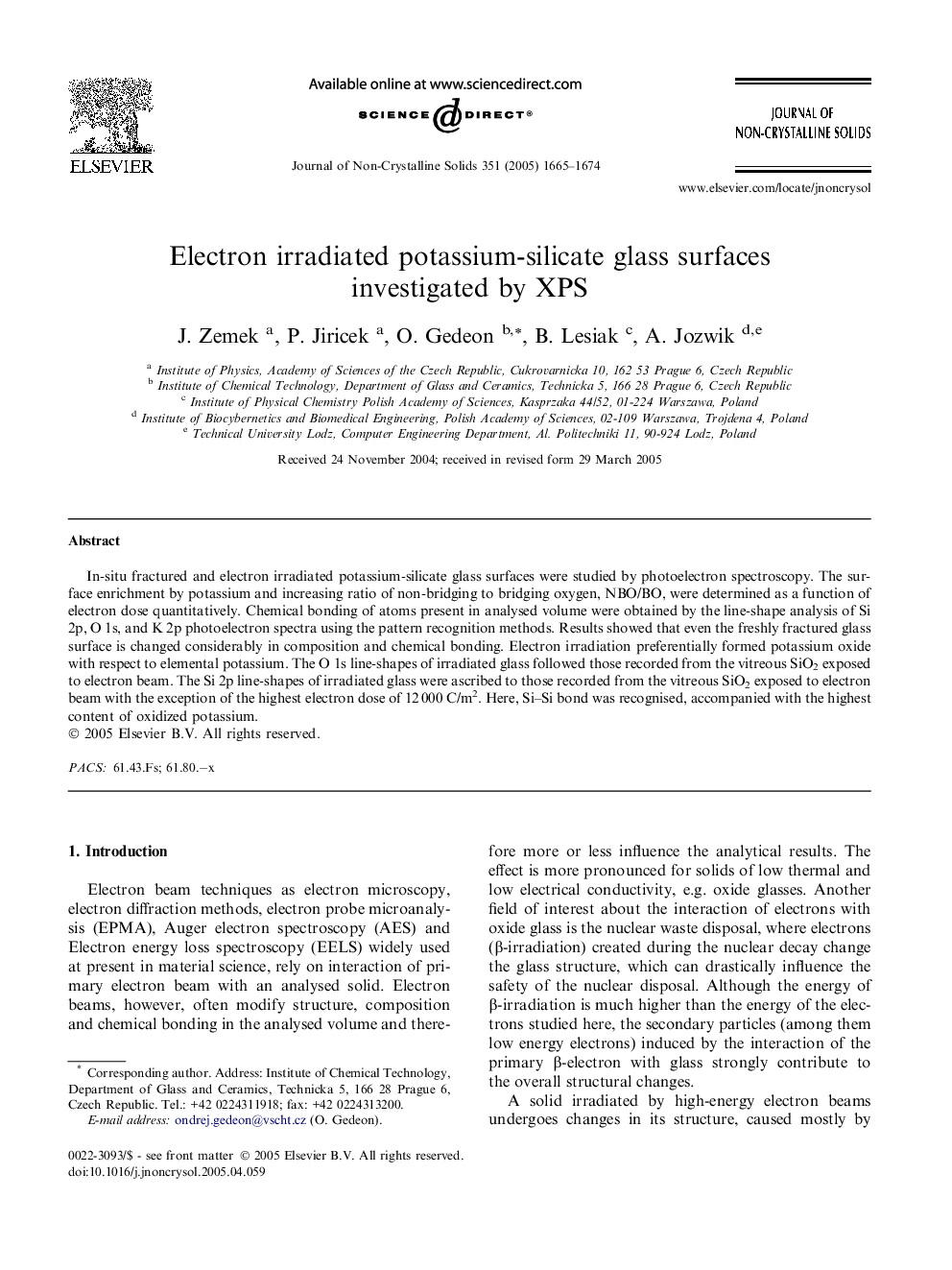| Article ID | Journal | Published Year | Pages | File Type |
|---|---|---|---|---|
| 9778063 | Journal of Non-Crystalline Solids | 2005 | 10 Pages |
Abstract
In-situ fractured and electron irradiated potassium-silicate glass surfaces were studied by photoelectron spectroscopy. The surface enrichment by potassium and increasing ratio of non-bridging to bridging oxygen, NBO/BO, were determined as a function of electron dose quantitatively. Chemical bonding of atoms present in analysed volume were obtained by the line-shape analysis of Si 2p, O 1s, and K 2p photoelectron spectra using the pattern recognition methods. Results showed that even the freshly fractured glass surface is changed considerably in composition and chemical bonding. Electron irradiation preferentially formed potassium oxide with respect to elemental potassium. The O 1s line-shapes of irradiated glass followed those recorded from the vitreous SiO2 exposed to electron beam. The Si 2p line-shapes of irradiated glass were ascribed to those recorded from the vitreous SiO2 exposed to electron beam with the exception of the highest electron dose of 12Â 000Â C/m2. Here, Si-Si bond was recognised, accompanied with the highest content of oxidized potassium.
Related Topics
Physical Sciences and Engineering
Materials Science
Ceramics and Composites
Authors
J. Zemek, P. Jiricek, O. Gedeon, B. Lesiak, A. Jozwik,
